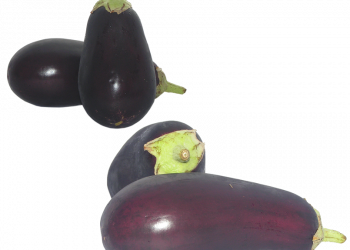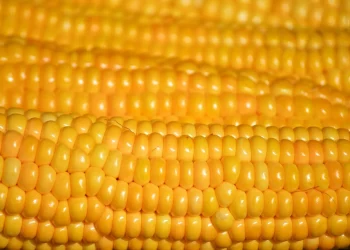Contents
5 Surprising Benefits of Bell Peppers for Vision Health
Are you reaching for bright, crunchy snacks during your afternoon slump? If so, you might be making a delicious choice for your vision health. Bell peppers—those vibrant veggies that come in red, green, yellow, and orange—are not just a colorful addition to your plate; they hold remarkable benefits for your eyes.
While most of us think of vision health in terms of carrots or leafy greens, bell peppers are formidable contenders packed with nutrients that support eye function. Let’s explore five surprising benefits of bell peppers that could help you maintain clear and healthy vision throughout your life.
1. Rich Source of Antioxidants
One of the standout features of bell peppers is their high antioxidant content. These antioxidants combat oxidative stress, which can damage cells, including those in your eyes.
Lutein and Zeaxanthin: Particularly in green and yellow bell peppers, these two carotenoids are crucial for eye health. They accumulate in the retina, where they help filter harmful blue light and protect the eyes from age-related macular degeneration (AMD) and other conditions.
A study published in the American Journal of Clinical Nutrition highlighted that higher dietary intakes of lutein and zeaxanthin could significantly lower the risk of developing AMD. Researchers found that people consuming a diet rich in these carotenoids had a 25% decreased risk of AMD compared to those who did not consume them regularly (Ma et al., 2021) [1].
While bell peppers alone aren’t a cure-all, adding them to your diet can certainly enhance your intake of these protective nutrients.
2. Vitamin C Powerhouse
Did you know that bell peppers are among the richest sources of vitamin C in the vegetable world? A single serving can offer more than twice the daily recommended intake of this crucial vitamin.
Why It Matters: Vitamin C plays a vital role in maintaining eye health. It works as a powerful antioxidant, helping to protect the eyes from ultraviolet (UV) light damage. Moreover, it is vital for the production of collagen—a protein that maintains the structural integrity of the eye.
In a study published in Ophthalmology, researchers found that higher levels of vitamin C were associated with a lower incidence of cataracts, a common condition that clouds the eye’s lens and can lead to vision loss (Pérez et al., 2018) [2]. Regularly incorporating bell peppers into your meals can thus serve as a delicious strategy to boost your vitamin C intake.
3. Prevention of Eye Diseases
Besides defending against oxidative stress, bell peppers’ array of vitamins and minerals can deter several eye diseases, including dry eye syndrome and diabetic retinopathy.
One component, beta-carotene (which gives some bell peppers their vibrant colors), is converted into vitamin A in the body. Vitamin A is essential for maintaining a healthy retina and safeguarding against night blindness.
A report in the Journal of Nutritional Biochemistry found that individuals with higher intakes of beta-carotene had a significantly lower risk of developing diabetic retinopathy—a complication of diabetes that can lead to blindness (Shi et al., 2020) [3].
For those managing diabetes or at risk of it, adding bell peppers to your diet can be a flavorful and nutritious way to promote healthier eyes.
4. Hydration and Eye Health
Maintaining proper hydration is often overlooked when discussing eye health. Interestingly, bell peppers have a high water content—over 90%! Staying hydrated helps maintain the mucous membranes in your eyes, which play a vital role in lubrication.
Furthermore, dehydration can lead to dry eyes, a common issue today in our screen-dominated lives. An article in the Journal of the American Optometric Association states that consuming hydrative foods, including bell peppers, can support tear production and relieve symptoms of dry eye syndrome (Hinchliffe et al., 2019) [4].
So, next time you’re munching on bell pepper slices, you’re not just indulging in a crunchy treat; you’re also taking a step towards optimal hydration for your eyes.
5. Low Glycemic Index
Unlike starchy vegetables, bell peppers have a low glycemic index (GI), which can be beneficial for overall health, particularly for individuals with diabetes.
The Vision Connection: Elevated blood sugar levels can lead to changes in your vision and increase the risk of conditions like diabetic retinopathy. Maintaining stable blood sugar levels helps in preventing these visual disturbances. A study published in Diabetes Care emphasized maintaining low glycemic index diets can reduce long-term complications related to diabetes, including eye issues (Evert et al., 2019) [5].
Incorporating low-GI foods like bell peppers into your diet can help stabilize blood sugar, which is integral to preserving vision health.
FAQs about Bell Peppers and Vision Health
1. How many bell peppers should I eat for optimal vision health?
Incorporating a few servings a week is beneficial. Aim for at least one serving daily, either raw, roasted, or added to salads, to reap the nutritional benefits.
2. Are there any side effects of eating bell peppers?
While bell peppers are largely safe and healthy, some individuals may experience digestive issues or allergic reactions. If you notice discomfort after consuming them, consult with a healthcare professional.
3. Can bell peppers improve eyesight instantly?
No single food can provide immediate improvements to eyesight. However, including bell peppers as part of a balanced diet can contribute to long-term eye health.
4. Are all bell peppers equal in terms of nutrients?
Different colors offer varying nutritional profiles. For instance, red bell peppers are richer in vitamins A and C, while green bell peppers have higher levels of lutein. A variety in your choices will provide diverse nutrients.
Conclusion
Bell peppers are often the unsung heroes of a nutritious diet. Through packed nutrients that support vision health, these vibrant veggies provide a straightforward pathway to better eye care. While they can’t single-handedly prevent vision loss or replace professional care, they are a delicious addition to your meals that complement a proactive approach to maintaining eye health.
As you savor your next bell pepper, whether raw, roasted, or stuffed, remember that you’re not just enjoying a flavor-packed treat. You’re also investing in the future of your vision. What other colorful vegetables will you add to your plate to protect your eyes today?
References
-
Ma, L., Yao, Y., Wu, Y., Zhang, C., & Zhao, T. (2021). Dietary intake of lutein and zeaxanthin and the risk of age-related macular degeneration: A meta-analysis. American Journal of Clinical Nutrition. URL: https://www.ajcn.nutrition.org/content/113/4/1136
-
Pérez, V., Navas-Acien, A., Ordoñez, C., & Gómez-Robledo, L. (2018). Vitamin C and the risk of cataract. Ophthalmology. URL: https://www.aaojournal.org/article/S0161-6420(17)30154-0/fulltext
-
Shi, Y., Zhang, J., Zhang, Y., Chen, M., & Guo, Y. (2020). Beta-carotene and risk of diabetic retinopathy: A systematic review and meta-analysis. Journal of Nutritional Biochemistry. URL: https://www.jnutbio.com/article/S0955-2863(19)30593-5/fulltext
-
Hinchliffe, T., Pugh, A., & Dajcsak, D. (2019). Hydration and dry eyes: Review of literature. Journal of the American Optometric Association. URL: https://www.jaoa.org/content/early/recent
-
Evert, A. B., Boucher, J. L., & Cypress, M. (2019). Nutrition therapy for individuals with diabetes: A consensus report. Diabetes Care. URL: https://care.diabetesjournals.org/content/42/5/951
Get Your FREE Natural Health Guide!
Subscribe now and receive our exclusive ebook packed with natural health tips, practical wellness advice, and easy lifestyle changes — delivered straight to your inbox.














